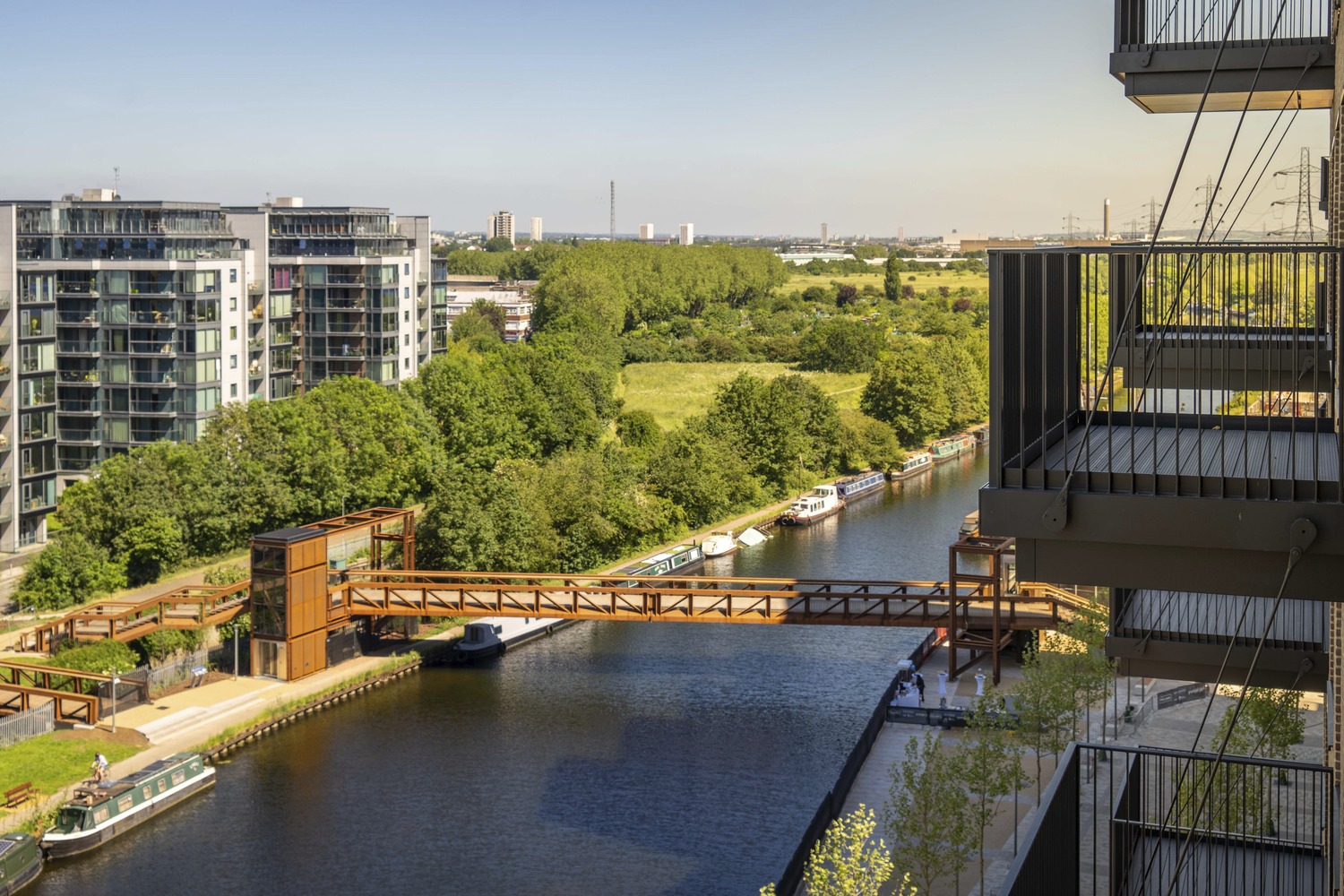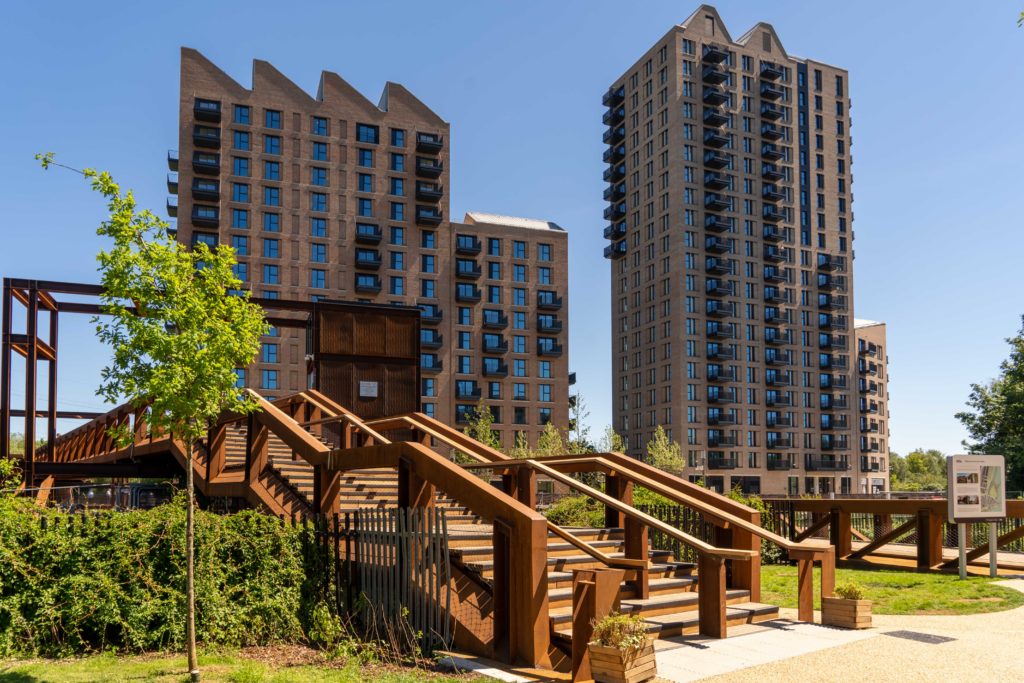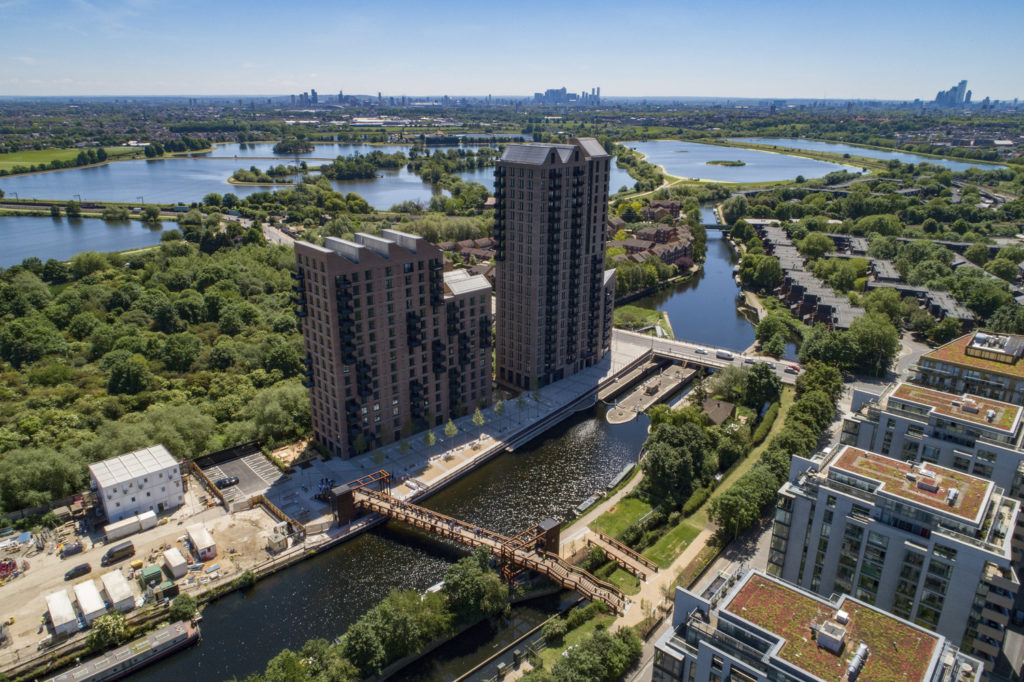Hale Wharf blog series part I: Building bridges to biodiversity
26.06.24 3 min read

In one of the Capital’s lesser-known nature reserves you will find a diverse mix of green and blue space spanning ten acres in Zone 3.
Located within the London Borough of Haringey, The Paddock Community Nature Reserve is formed of a diverse environment of woodland, scrub, meadow, ponds and surrounding rivers that support a range of mammals, birds, insects and plants. It spreads out on the opposite side of the River Lea Navigation to our Hale Wharf community.
Knowing the significance of green space like The Paddock within a densely populated area like Tottenham Hale, the project team recognised the importance of looking beyond the red lines and how to connect its existing and emerging community to this space, improving accessibility.
The question wasn’t if a bridge could be built to connect local people to nature, but how.
Hale Wharf is being delivered by Waterside Places, our strategic joint venture with Canal & River Trust, in partnership with the Mayor of London and London Borough of Haringey. It sits within one of the Mayor of London’s Housing Zones, with 505 homes being delivered, of which 191 are classified as Affordable Rent. Hale Wharf is making an important contribution to the Mayor’s and the Greater London Authority’s aspiration for 2,000 new homes in the borough.
As with all Waterside Places communities, the water’s edge will be regenerated thanks to upgrades of access routes for commercial barges as well as canal wall repairs and the addition of floating reed beds.

New, accessible bridge for all connecting Hale Wharf to Hale Village
In 2021, the first phase of 249 new mixed tenure homes were completed, along with the new Hale Wharf Bridge, which now provides a vital link between Hale Wharf and the Paddock. This bridge is also an important piece of infrastructure, providing energy to the site from the nearby Hale Village.
The brand new, architecturally striking, accessible, Hale Wharf Bridge has created value for the community in many ways, but not least through safety. Previously, those looking to access Tottenham Hale from Hale Wharf on foot would have needed to walk along Ferry Lane, a busy road which was poorly lit and unwelcoming at times. Since its introduction, the local community are more likely to cross the River Lee Navigation and enjoy Hale Wharf, and vice versa. Residents have felt safer in the area, all contributing to a better quality of life in Tottenham Hale and encouraging people to walk to the Paddock and reap the benefits of spending time in nature.
Hale Wharf exemplifies how thoughtful infrastructure can bridge the gap between urban progress, preservation of natural landscapes and improving the day-to-day lives of local people, to ultimately create a more holistic and inviting place to live.
